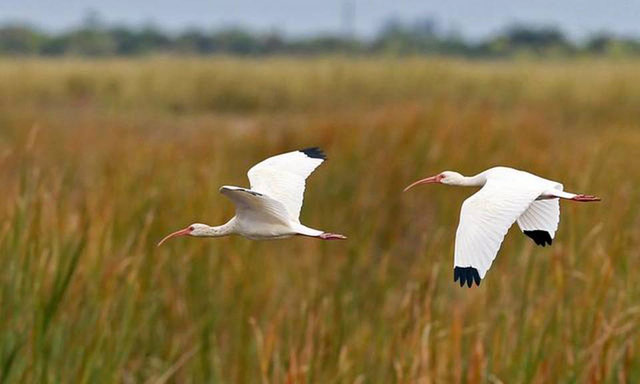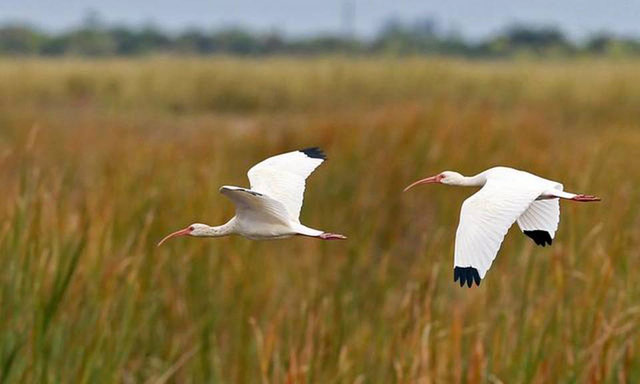The rise of the prize has helped define innovation in the 21st Century, triggering breakthroughs in space travel, third-world vaccinations, driver-less cars and even better movie downloads.
Now the Everglades Foundation has joined the trend with its own science challenge: $10 million to anyone who can solve the chronic problem of phosphorous pollution that has sickened the Everglades and coastal estuaries, and vexed politicians, environmentalists and water managers for decades. To ensure an even greener outcome, the winning project must also recycle phosphorous to meet a growing fertilizer shortage. And all at a reasonable cost.
On Monday, the nonprofit announced an anonymous $10 million donation to pay for the challenge, which it expects to stretch over seven years as competitors reach various benchmarks to measure the success of their work. It also expands the Palmetto Bay-based foundation’s work beyond Florida.
“Government cannot solve this problem of phosphorous in water alone. It very much needs a public-private partnership and I put the emphasis on private,” foundation chief executive officer Eric Eikenberg said in a press briefing.
Over the last 18 months, foundation scientists have met with government officials, business leaders and other scientists to develop a criteria for the competition, said Maurice Ferre, a foundation board member who is chairing the challenge.
Calling it “one of the world’s most daunting environmental problems,” the group focused on phosphorous that is part of a soup of run-off from farms and yards that threatens water around the country. South Florida has been particularly vulnerable from dirty water in Lake Okeechobee, the chief source of fresh water to the Everglades. Last summer, water flowing east and west from the lake turned the St. Lucie and Caloosahatchee rivers a bright emerald green as phosphorous-fed, fish-killing algae bloomed.
The competition took on broader urgency this summer when algae bloomed in Lake Erie, shutting off water to a half million residents in Toledo, Eikenberg said. On Wednesday, the foundation plans to stage a formal press conference in Chicago.
Over the years, Florida has fought to control phosphorous, enacting a series of laws and spending more than a billion dollars on a vast series of artificial marshes to scrub the pollutant from water flowing into the Glades. The sugar industry, the source of much of the pollution, has dramatically reduced its fertilizer use over the last decades but tons of phosphorus still flow every year into drainage canals with storm run-off.
Solving the phosphorous riddle, “is really the right idea because farm fertilizer is such a pestilence on the state,” said David Guest, a managing attorney for Earth Justice, which sued the South Florida Water Management District to halt the practice of “back-pumping” storm water into Lake Okeechobee.
The competition was split into phases designed to assess the pollution-reducing potential of proposals, said foundation chief scientist G. Melodie Naja, who will oversee research and help convene an independent panel of scientists to review work. Competitors will have to first prove the success of their work in the lab. Next, results must be proven on a larger scale in a swimming pool. The final phase will test phosphate reduction in the Kissimmee River, a major tributary adding to lake pollution.
The goal, Naja said, is to reduce phosphorous in water to 40 parts per billion. Concentrations in the Kissimmee River now run about six to nine times higher, she said.
“We want to see if we can clean water on a huge scale,” she said.
While reducing phosphorous has been one of the Everglades Foundation’s main missions, the prize also takes into account a growing global shortage of phosphate rock, the main ingredient in phosphorous. World supplies are now controlled by just a few countries — China, South Africa, Jordan, Morocco and the U.S. A 2010 report cited by the Everglades Foundation warned of a pending crisis.
In addition to the $10 million grand prize, the foundation also hopes to award smaller prizes totaling $1 million leading up to the 2022 award.
While awarding prizes for excellence in science or the arts is nothing new, tailoring awards to achieve certain goals has become a uniquely 21st century tool to spur innovation. Since 1991, about 80 percent of prizes totaling more than $375 million have been designed to achieve a specific innovation rather than recognizing general excellence, according to a 2009 study by the international management firm McKinsey & Company.
The study found competitions have generally shifted away from achievement in arts and humanities to science, engineering, aviation, space and the environment, driven in part by a pool of new philanthropists intent on achieving social goals. Mobilizing participants, who often spend their own money in pursuit of the prize, ultimately creates, the study found, “a powerful instrument of change.”
Naja said she is confident the Everglades challenge will draw competitors since the group already receives frequent inquiries from people claiming to be able to reduce phosphorous.
“There are also many researchers at universities working on the phosphorous problem in the environment,” she said. “So I bet we’ll receive many applicants.”
http://www.miamiherald.com/news/local/environment/article2207486.html



